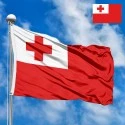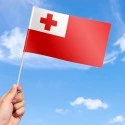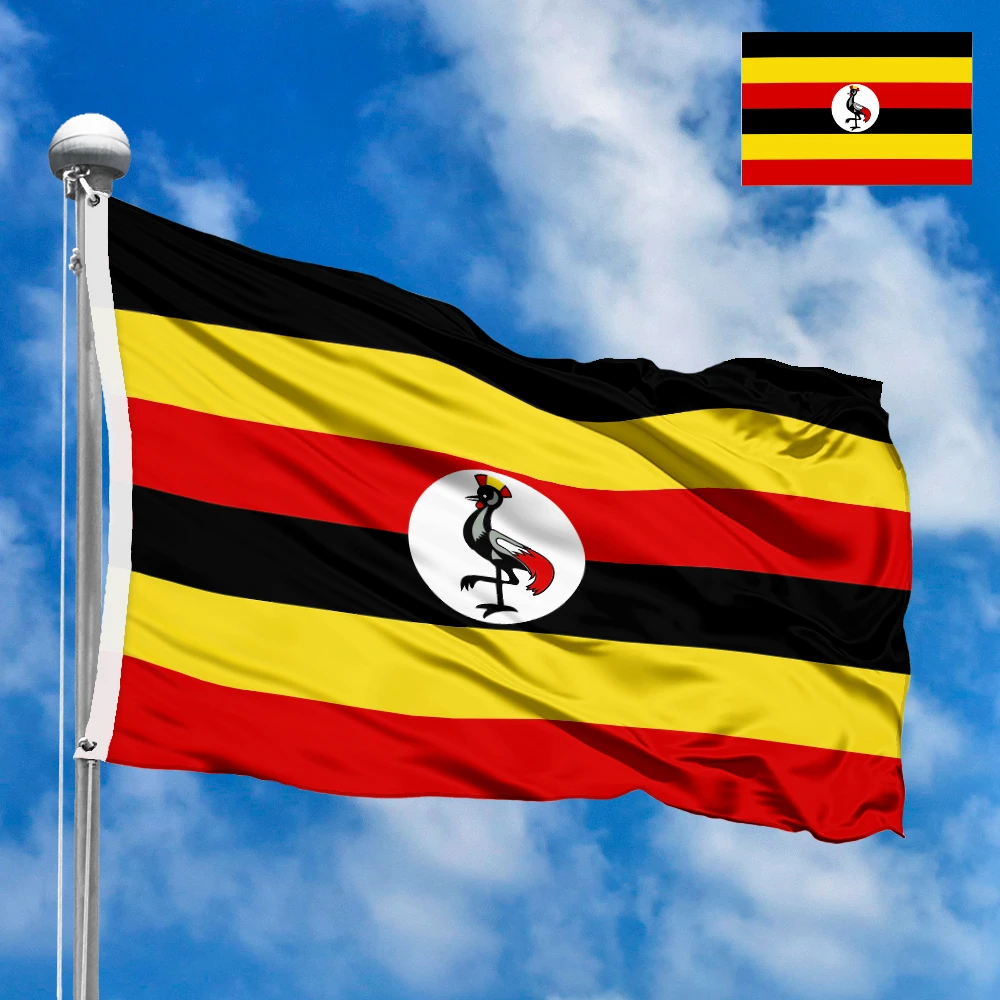The flag of Tonga is a powerful and deeply religious symbol that represents the nation’s profound connection to Christianity and its unique constitutional history. Adopted on November 4, 1875, it is one of the oldest national flags in continuous use in the Pacific.
Design and Symbolism
The flag features a red field with a white canton in the upper hoist-side corner. Within the canton is a red Greek cross, which is centered.
-
The Red Field: The dominant color of the flag, red, symbolizes the blood of Jesus Christ, which was shed for the salvation of humanity. This is a central tenet of the Tongan Christian faith and represents the nation's steadfast devotion to its religious principles.
-
The White Canton: The white background of the canton represents purity, peace, and the nation's commitment to living a life guided by spiritual values. It provides a stark and powerful contrast to the red field.
-
The Red Greek Cross: The cross is the most significant element of the flag, symbolizing Christianity, the state religion of Tonga. The cross is a Greek cross, meaning all four arms are of equal length. Its red color reinforces the theme of the blood of Christ.
History and Adoption
The history of the Tongan flag is directly linked to the country's first monarch, King George Tupou I, and his desire to establish a nation founded on Christian principles. The initial design, created in the 1860s by Prince Uelingatoni Ngū and the British missionary Shirley Waldemar Baker, featured a white flag with a red cross. However, this flag was too similar to the International Red Cross flag, which was created shortly after. To avoid confusion, a new design was adopted, placing the red cross in a white canton on a red field.
This new flag was officially adopted with the promulgation of the Tongan Constitution on November 4, 1875. The constitution explicitly mandates the design of the flag, stating that it "shall never be altered." This constitutional protection ensures that the flag remains a permanent symbol of the nation’s core values, a rarity among national flags worldwide.
Flag Size and Proportions
The official dimensions of the Tongan flag are typically not specified in a rigid ratio, but common usage and official regulations follow a 1:2 proportion. The canton occupies one-quarter of the flag's total area. The cross within the canton has arms of equal length, with the width of the arms being a standard proportion to the canton's size.
The Country, Region, and Meaning for Residents
The Kingdom of Tonga is an archipelago in the South Pacific Ocean, composed of 169 islands, of which 36 are inhabited. It is the only remaining monarchy in Polynesia. The people, known as Tongans, are proud of their history and culture, which is deeply intertwined with their strong Christian faith.
For Tongans, the flag is not merely a national emblem; it is a sacred symbol of their covenant with God and their national identity. The flag's design is a daily reminder of their religious heritage and the foundational principles of their nation. It represents their pride in being a Christian kingdom and a symbol of their unity under one monarch and one faith. The constitutional protection of the flag's design underscores its importance, making it a powerful testament to the people's unwavering commitment to their values.
Interesting Facts
-
The Tongan flag is one of the few national flags in the world to have its design enshrined in the country’s constitution, making it illegal to alter its appearance.
-
The original flag was a white banner with a red cross, which had to be changed to avoid confusion with the Red Cross flag.
-
The Tongan national anthem, "E 'Otua Mafimafi" (Oh, Almighty God), also reflects the strong Christian foundation of the nation, further reinforcing the message of the flag.
The Flag of Tonga is a powerful visual narrative, a vibrant testament to the nation’s history, faith, and enduring identity as a sovereign Christian kingdom.
In the demonstration images, full-size flags are shown with proportions of 2:3, and hand-held flags with proportions of 1:2.







 Waving flag
Waving flag
 Sizes:
Sizes:
 Round flag
Round flag
 Sizes:
Sizes:
 Rectangular flag 2:3
Rectangular flag 2:3
 Sizes:
Sizes: